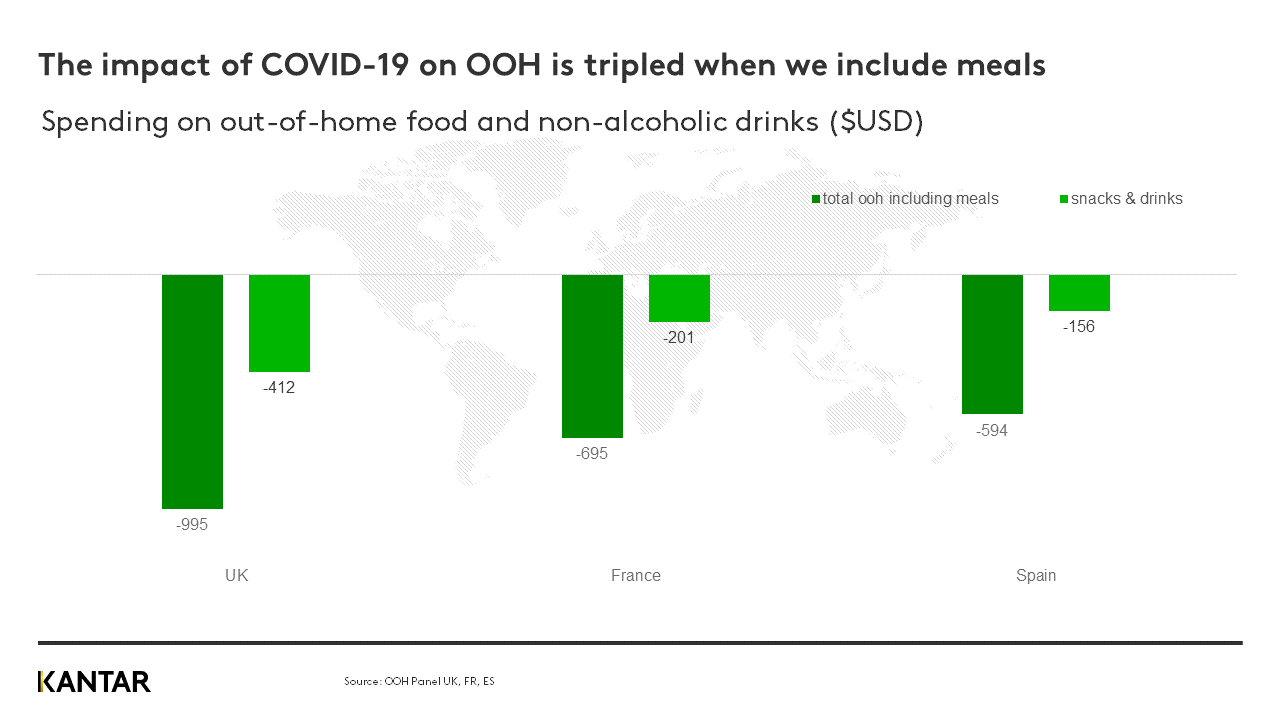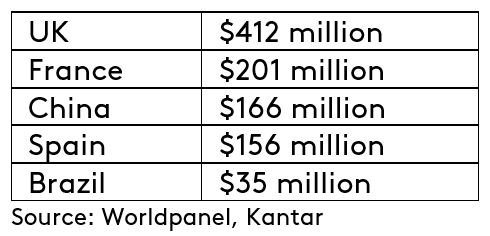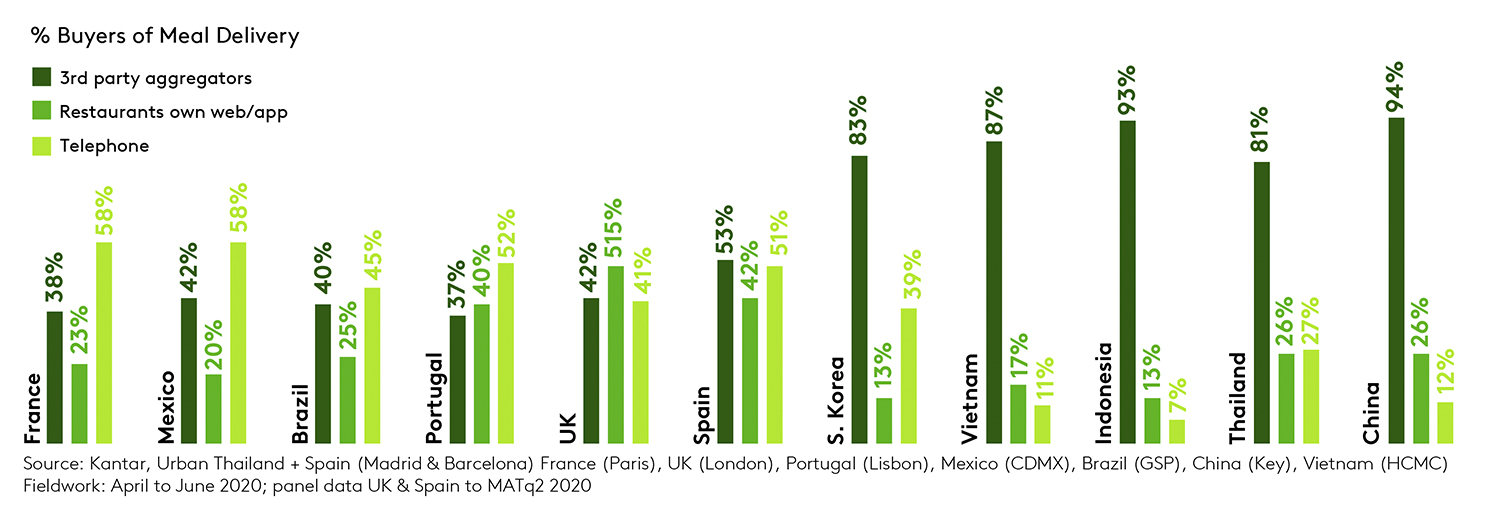Out-of-home (OOH) food purchasing patterns are costing global economies millions of dollars in lost revenue. Reduced consumer confidence and restrictions on social contact have created an environment where the food service industry is reliant on in-home delivery services to keep it going, according to our latest report: “Out-of-home food and drinks landscape. COVID-19 impact and the road to recovery”.
During the first half of 2020, one week of lockdown cost the UK alone $412 million in lost spending on snacks and non-alcoholic drinks.
$995 million in the UK, $695 million in France, and $594 million in Spain in total was lost due to reduced OOH food consumption.

Lost spending on snacks and non-alcoholic drinks in one week of lockdown

Across the first half of 2020 (to mid-June) OOH food consumption fell. As countries emerged from the first wave of lockdowns, the transition to home working restricted the recovery in OOH spending. The fall in OOH food spending was not completely compensated for by the rise in grocery sales we have seen around the world.
Other findings from the study include:
- While non-alcoholic drinks consumption grew by 10% in 2020, spending is down by an average of 36% vs. 2019 as a result of the pandemic.
- OOH coffee sales in the UK dropped from $484 million in March to $68 million in April – a fall of 86%. By the end of August, the highest coffee sales volumes were still 50% lower than average 2019 volumes at just under $250 million per month – while coffee purchases for in-home use had risen by 17% to just over $109m per month.
- In urban environments in France, just 55% of consumers have used a home meal delivery service in the last year – and only 8% are using those services once a week, highlighting a clear opportunity for growth and recovery.
- The countries that have seen the least damage to their OOH sales seem to be those that have highest penetration of meal delivery services.
The European OOH food market has been more heavily affected than Latin American and Asian countries. One major driver of this is the high penetration of meal delivery apps and services in Asia and Latin America compared to European cities. Penetration of meal delivery services (among consumers aged under 50) in cities in South Korea is at 99%; it is 84% in China, and 80% in Brazil. This is compared to much lower penetration of 36% in the UK, 37% in Spain and 44% in France. Across the world, ‘enjoyment’ is cited by 59% of users (compared to 41% citing convenience) as the motivation for using home delivery apps, suggesting that food delivery is fast becoming a ‘small treat’ strategy for people in difficult economic times.

In the UK, meal delivery spending grew from $200 million per month in 2019 to $800 million per month in Q2 2020. UK meal purchases would have decreased by 70% from $5.4 billion to $1.9 billion in April, but meal deliveries compensated for some of the loss, leaving the decrease at 50% ($2.7 billion).
Home meal delivery has smoothed the economic impact of COVID-19 for some countries, creating an incremental opportunity as people seek small treats in difficult times. The industry is very established in Asia and Latin America and presents a good growth and recovery strategy in Europe. Investing in increasing the use of food delivery apps could help claw back lost revenue for cafes, takeaways and restaurants.
And we see lots of other opportunities for innovation: home delivery services have space to widen their offerings, especially in the drinks market and for traditional OOH brands to find ways to create opportunities for their brands to be consumed in the home.

